3. Hotel Mel

Project: Family dark ride
Location: Sunset Blvd.
“Opened”: 1993
Sunset Blvd. had been in the works since shortly after the park opened. Frankly, the Disney-MGM Studios had proven more popular than anticipated, so the extra ride capacity and breathing room of a new land would work wonders. And while Toontown and Crime-Stoppers would certainly be gotta-see-’em headliners, Disney was anticipating a big name connection to truly bring Sunset Blvd. to life. Roger and Dick would be joined by Mel.
As the story goes, Imagineers were tasked with incorporating the “horror” genre into the park in a meaningful way, and even toyed with attractions themed to Friday the 13th, Halloween, or the works of Stephen King. Ultimately, they all came across as too violent or horrible, even for the more “mature” and “edgy” studio park. The solution? A horror-comedy. And of course, no one knows horror-comedy like Mel Brooks, director of 1974’s cult classic Young Frankenstein.
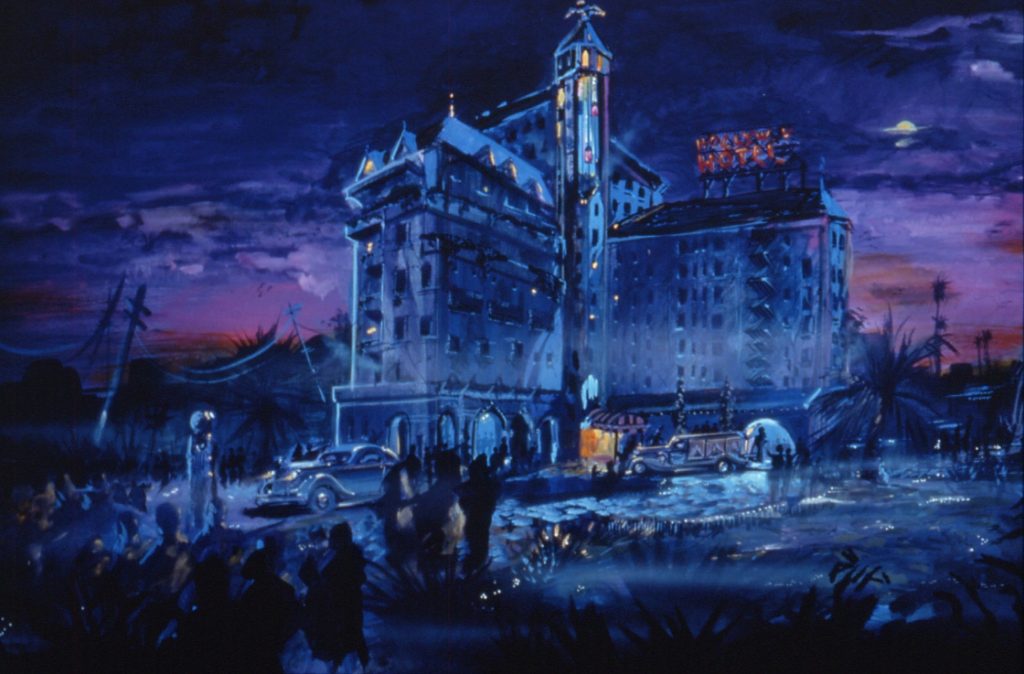
Working with Mel Brooks, Disney Imagineers began to craft a new dark ride through the ruined remains of a once-luxurious Hollywood hote, now being used as the hot set of a monster movie. Of course, HOTEL MEL invites guests into the dilapidated structure to go behind-the-screams.
Inside, you might catch Frankenstein in his movie trailer, the Mummy leaving the bathroom with his bandages trailing behind, Dracula in the makeup chair, and more. Like the Haunted Mansion, it’s meant to be a frightfully funny trip through the making of a monster movie, culminating in guests’ big breakthrough role, screaming into the camera.
4. Copperfield’s Magic Underground
Project: Immersive restaurant
Location: Hollywood Blvd.
“Opened”: 1995
If you had to guess which solo performing artist had sold more tickets than any other, who might you guess? Michael Jackson? Madonna? Beyonce? Celine Dion? Elvis? Nope. At least as recently as 2006, the answer was David Copperfield.
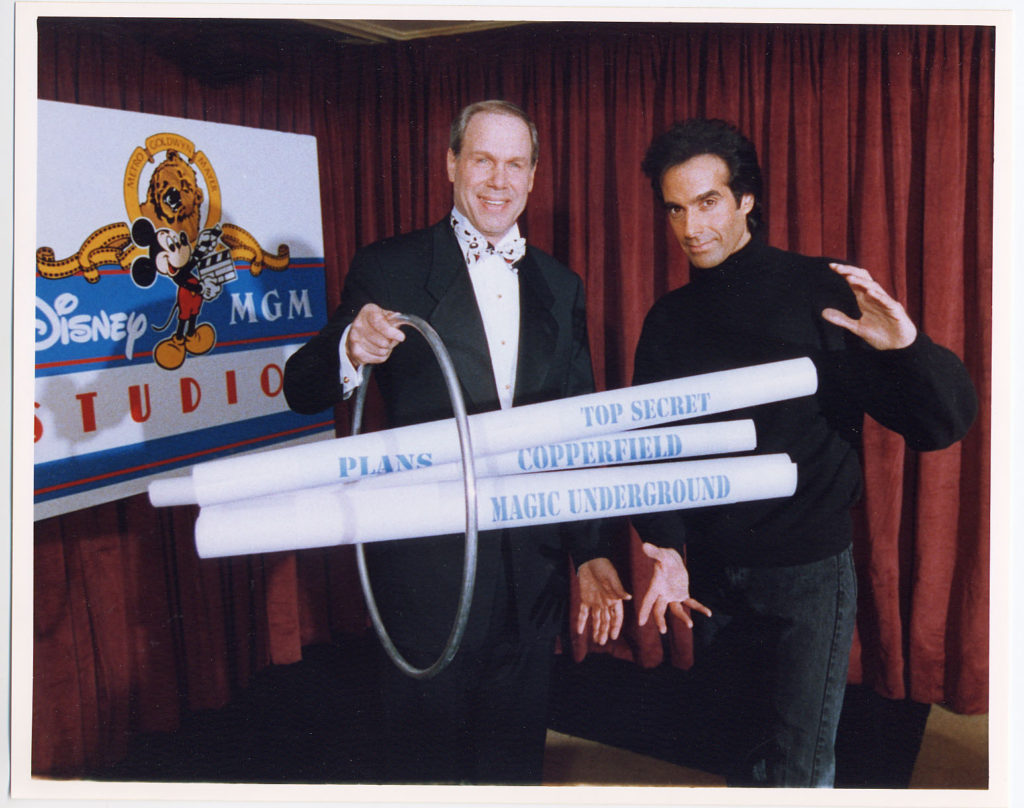
The illusionist is by far the most commercially successful magician in history, grossing over $4 billion in ticket sales over his career and earning 11 Guinness World Records, 21 Emmy Awards, and “Living Legend” status conferred by the U.S. Library of Congress. Copperfield’s most famous trick was a 1983 televised special wherein he seemingly made the Statue of Liberty disappear. So heading into the ’90s, Copperfield was a world-renowned star.
Mix that in with another star of the era: the rise of “themed family dining.” The very same day that the Disney-MGM Studios opened, Eisner’s equally cinematic Pleasure Island launched, defined by a “reused warehouse” design aesthetic layered with embedded backstory and hosting immersive clubs, restaurants, and bars. It’s likely that Pleasure Island’s attractions (like the Lost Legend: The Adventurers Club) spurred the ’90s proliferation of the Hard Rock Cafe, Planet Hollywood, Johnny Rockets, and the Rainforest Cafe, each becoming regional attractions in their own right.
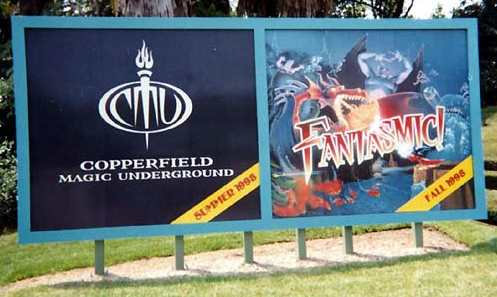
Sensing a winning combination, a pair of venture capitalists pursued Copperfield, ultimately licensing his name and brand to develop COPPERFIELD MAGIC UNDERGROUND! Though the first location opened in New York City’s Times Square, the second at Disney’s Hollywood Studios was a perfect fit for the park. Constructed alongside Fantasmic!, the restaurant was wedged between the Hollywood Hills Amphitheater and the park’s entrance. Cleverly, that allows the restaurant to serve guests both inside and outside of the park (a formula later reused for Animal Kingdom’s Rainforest Cafe).
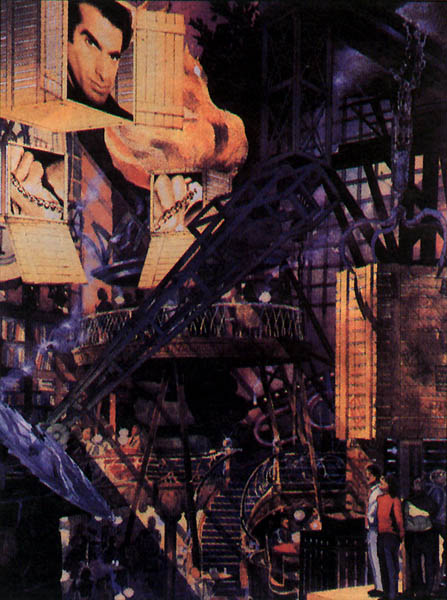
Inside, guests find themselves in a warehouse of oddities, stacked wall-to-wall with library books, crates, ornate metalwork, camera rigs, and giant props and illusions. Like its “immersive family dining” peers, the cavernous, kinetic interior is truly home to a high-capacity, high-volume restaurant.
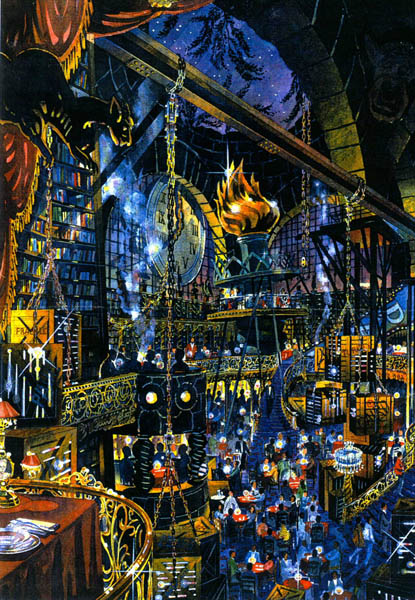
But rather than being surrounded in jungle animals, robotic dinosaurs, celebrity ephemera, or classic cars, a trip to Copperfield Magic Underground allows you the chance to see real illusions performed right in front of your eyes; to get an up-close look at Copperfield’s most compelling magic (while never revealing the trick); to dine among giant props and signature elements from his career, like a balcony built around the torch of the Statue of Liberty, magically relocated here.
Copperfield’s Magic Underground gave the still-young Disney-MGM Studios an out-of-this-world family dining experience long before the Be Our Guest Restaurant or the Three Broomsticks would make it standard. And while it’s operated by an outside conglomerate (just like Rainforest), it feels right at home at the park, cementing its growing identity as a place packed with the celebrities of the day, the magic of television, and the power of seeing behind-the-scenes.
5. Backstage Studio Tour additions
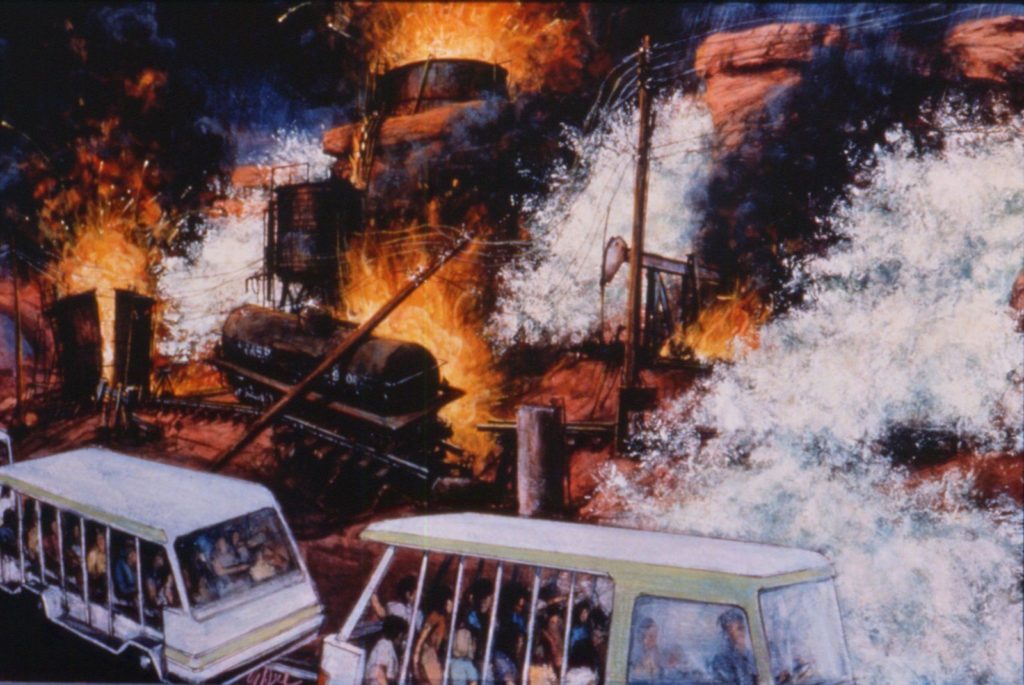
Project: A new Studio Tour scene
Location: Backstage Studio Tour
“Opened”: Unknown
It’s no surprise that Disney didn’t invent the “Studio Tour” formula. Quite the contrary, they intentionally and unapologetically stole it! Disney’s decision to whisk guests through their studio’s backlot on trams was lifted directed from Universal Studios Hollywood, and allegedly served as a preemptive strike against Universal’s plans for a Florida park. The real highlight of Disney’s tram tour, however, had always been its single staged special effects demonstration, Catastophe Canyon.
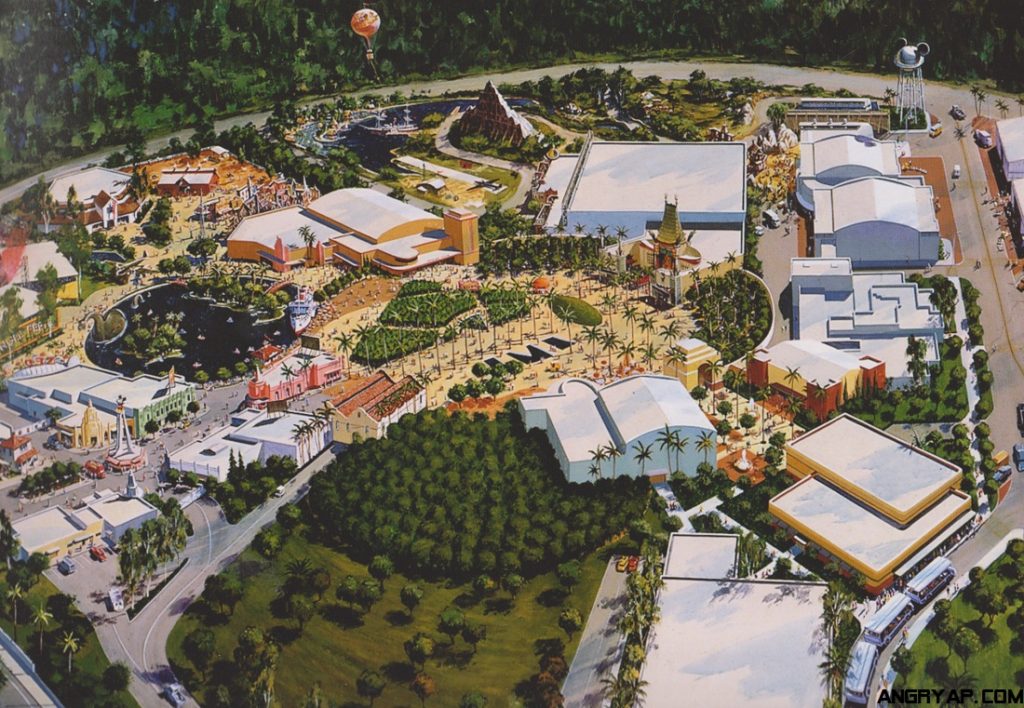
Given that the Backstage Studio Tour was one of just two rides at the park when it opened (and the only way to see the entire production facility half of the park), it makes sense that Imagineers quickly got to work expanding it. In the mid-90s, a mountain rose over the park’s backlot. But unlike the mountains at other Disney parks, this one is halved and hollow, held up by wooden supports. As trams drive into the craggy peak, they’re actually entering a soundstage for a “creature feature” encounter pulled right from Universal’s tram-tour classics.
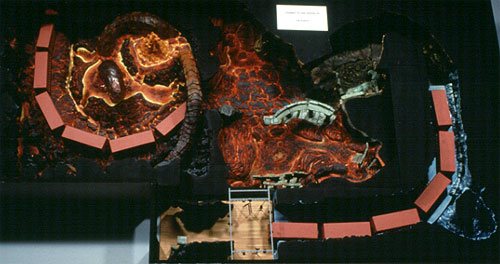
As the tram skirts through ancient rock chasms and icy corridors of frigid temperatures, they at last emerge into an underground world. Molten pools of bubbling, bursting lava and oppressive heat signal our arrival at the center of the Earth. Ancient Atlantean ruins appear to sink down into the geothermal pools while the tram drives cautiously over the floating peninsula of rock, passing under odd, stone arches…
… but wait, those arches are… moving? And as the tram drives deeper and deeper, they appear to transition from molten rock supernaturally circling around the roadway into armored plates, almost like an exoskeleton…
Unsurprisingly, this whole set up has been leading to something big. With the tram coiled in the pressurized grip of a subterrean worm creature, guests find themselves face-to-face with its hideous alien head as it rears back hissing. Of course, our path out of the center of the Earth opens up ahead, allowing the tram to make a quick escape back to the backlot, but that was one heck of a creature encounter!
Still, that leaves us with two of the biggest, most well-known never-built Studio projects in history… Read on as we explore two more headliners of Disney’s Possibility Studios, then find out what really happened to each one of these projects… and why…



